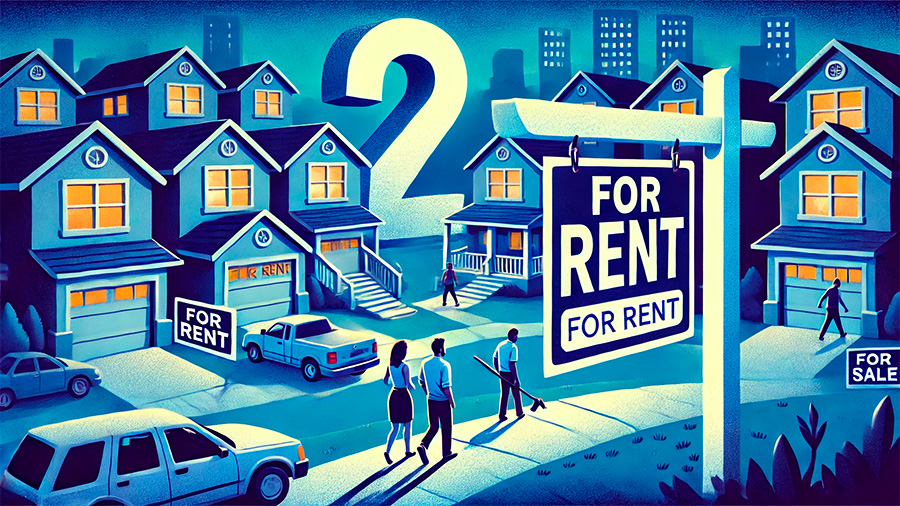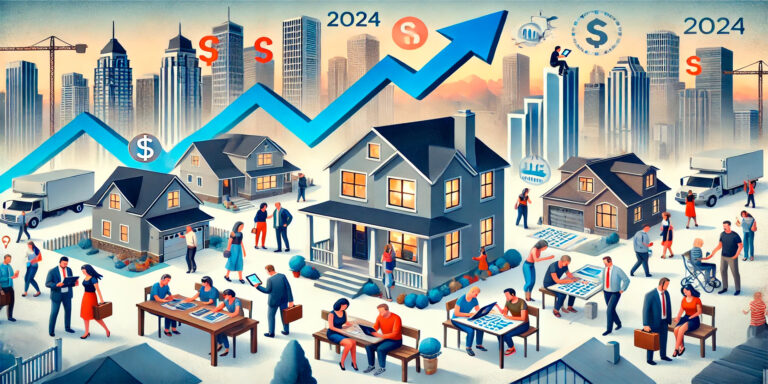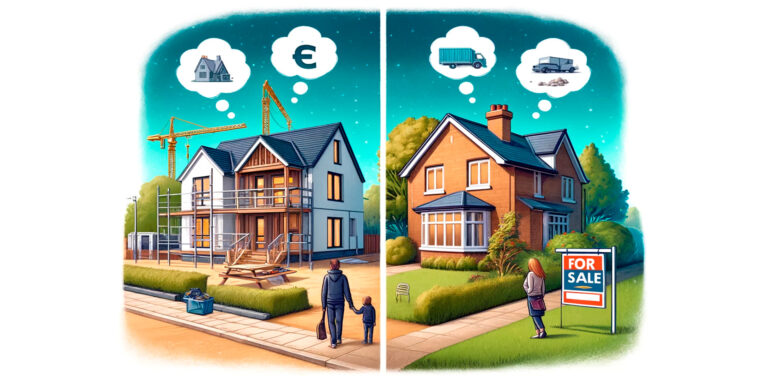As home prices continue to rise in many areas, an increasing number of people are opting to rent rather than buy. In today’s hot housing market, high costs, limited inventory, and fluctuating interest rates are making homeownership less attainable for many potential buyers. As a result, demand for rental properties is surging, with both long-term renters and those delaying homeownership driving the trend. This article explores the reasons behind the growing popularity of renting in a hot housing market and what this means for renters, investors, and the housing market overall.
The Impact of Rising Home Prices on Renters
One of the most significant factors contributing to the popularity of renting is the rapid rise in home prices. In many cities, home values have skyrocketed over the past few years, driven by strong demand and limited housing supply. For many prospective buyers, these higher prices have made purchasing a home increasingly difficult, pushing them toward renting as a more affordable option.
Affordability Challenges for Homebuyers
As home prices rise, affordability has become a major issue for many would-be buyers, particularly first-time homebuyers. For example, in markets like San Francisco, New York, and Austin, home prices have reached levels that are out of reach for many middle-income earners. Even in less competitive markets, home prices have increased significantly, making it difficult for buyers to save for a down payment and qualify for mortgages that meet their needs. In this environment, renting has become a more viable option for those who are either unable or unwilling to commit to a high-cost mortgage.
Smaller Down Payments and Less Financial Strain
Unlike buying a home, renting requires less upfront financial commitment. Homebuyers typically need to save for a down payment, which can be as much as 20% of the home’s purchase price. With rising home prices, that down payment can quickly become unattainable for many people. Renting, on the other hand, usually only requires a security deposit and the first month’s rent, making it a more accessible option for those who don’t have significant savings. Additionally, renting offers the flexibility to live in desirable neighborhoods without the financial strain of a mortgage.
The Flexibility of Renting in an Uncertain Market
Beyond affordability, the flexibility of renting is another reason why more people are choosing this option in today’s housing market. With so much uncertainty surrounding interest rates, job markets, and personal finances, renting allows individuals and families to maintain greater flexibility without the long-term commitment of homeownership.
Freedom to Move Without Financial Commitment
Renting provides the freedom to relocate without the financial commitment and potential complications of selling a home. For individuals whose jobs may require relocation or those who prefer a more mobile lifestyle, renting is an attractive option. This flexibility is particularly valuable in times of economic uncertainty, as renters can more easily move to areas with better job opportunities or lower living costs without being tied to a long-term mortgage.
Lower Risk in a Volatile Market
The housing market can be volatile, with periods of rapid price appreciation followed by corrections. While owning a home can build long-term wealth, it also carries the risk of price declines, especially in overheated markets. Renters, on the other hand, are insulated from fluctuations in property values and the financial risks associated with homeownership. By choosing to rent, individuals avoid the potential for losing equity during market downturns, providing them with greater financial stability in an uncertain market.

The Role of Rising Interest Rates in the Shift to Renting
In addition to rising home prices, interest rates are another key factor influencing the shift toward renting. Mortgage rates have been on the rise, making homeownership even more expensive and pushing some potential buyers to reconsider their plans.
Higher Mortgage Rates Reducing Affordability
In 2024, mortgage rates have increased steadily, significantly raising the cost of borrowing for homebuyers. Even a small increase in interest rates can have a large impact on monthly mortgage payments, making homes less affordable for buyers. For instance, a 1% rise in mortgage rates can add hundreds of dollars to monthly payments, which is enough to push many potential buyers out of the market. As a result, renting has become a more appealing option for those who are unwilling or unable to lock in a higher-rate mortgage.
Delaying Homeownership Due to Rate Volatility
With interest rates fluctuating, many potential homebuyers are choosing to delay purchasing a home in hopes that rates will drop in the future. Instead of committing to a mortgage at current rates, some individuals are opting to rent temporarily, allowing them to save money and wait for more favorable conditions in the housing market. This delay in homeownership is contributing to the growing demand for rental properties, as renters occupy the market for longer periods than they might have initially planned.
Rising Demand for Urban and Suburban Rentals
As more people choose to rent, demand for both urban and suburban rentals has increased. In cities, renters are drawn to the convenience, amenities, and proximity to jobs, while suburban areas are seeing more renters due to lower housing costs and a greater availability of larger rental properties.
Urban Rental Demand Remains Strong
Despite the shift to remote work during the pandemic, demand for urban rentals has remained strong, particularly in major cities like New York, Los Angeles, and Boston. Many renters are attracted to the vibrant culture, job opportunities, and amenities that cities offer. Urban areas also tend to have more rental options, including apartments, condos, and multi-family units, which can accommodate different types of renters, from singles to families. The strong demand in urban rental markets has led to increased rental prices, but many renters are willing to pay a premium for the convenience and lifestyle these areas provide.
Suburban Rentals Gaining Popularity
At the same time, suburban rentals are gaining popularity, particularly among families and individuals seeking more space. With home prices in suburban areas also rising, many prospective buyers are turning to rental properties as an alternative to homeownership. Suburban areas often offer larger homes with yards, better schools, and a quieter lifestyle, making them attractive to those who want more space but are not ready or able to buy. This trend has been particularly pronounced in areas near major cities, where suburban rental demand has surged as more people seek a balance between affordability and quality of life.

Investors Responding to Rental Demand
As demand for rental properties continues to rise, real estate investors are taking notice. Investors are capitalizing on the strong rental market by purchasing properties to rent out, leading to a growing inventory of rental units in both urban and suburban areas.
Increased Investment in Multi-Family Properties
One of the key trends in the rental market is increased investment in multi-family properties, such as apartment buildings and condos. These properties allow investors to maximize rental income by housing multiple tenants, making them an attractive investment in markets with high rental demand. Investors are particularly focused on cities and suburban areas where rental prices are rising, as these markets offer the potential for strong returns.
Single-Family Homes Becoming Rental Properties
In addition to multi-family properties, investors are increasingly turning to single-family homes as rental investments. As more people choose to rent rather than buy, the demand for single-family rental homes has surged, especially in suburban areas. Investors are buying up single-family homes to meet this growing demand, converting properties that would traditionally be sold to homebuyers into rental units. This trend has contributed to the limited supply of homes for sale, further driving up home prices and reinforcing the shift toward renting.
Long-Term Outlook: Renting as a Lifestyle Choice
While renting is often seen as a temporary solution for those who are saving to buy a home, it is increasingly becoming a long-term lifestyle choice for many individuals and families. As the housing market remains hot and affordability challenges persist, renting offers flexibility, financial stability, and access to desirable locations without the commitment of homeownership.
Renting Offers Financial Flexibility
For many people, renting provides the financial flexibility that homeownership does not. Without the need to take on a mortgage or worry about property maintenance, renters can allocate more of their income toward savings, investments, or other financial goals. Renting also allows individuals to live in high-cost areas without the financial burden of purchasing a home, making it an attractive option for those who prioritize lifestyle and location over homeownership.
The Rise of Renters by Choice
In today’s housing market, more people are choosing to rent as a long-term housing solution, rather than viewing it as a stepping stone to homeownership. These “renters by choice” value the convenience and flexibility that renting offers, and they are less interested in the traditional goal of homeownership. For some, renting aligns better with their career goals, lifestyle preferences, and financial priorities, making it the preferred option even in a hot housing market.
As home prices rise and affordability remains a challenge, the trend toward renting is expected to continue. Whether driven by financial constraints or a desire for flexibility, more people are choosing to rent in today’s competitive housing market, reshaping the landscape of both urban and suburban living.






